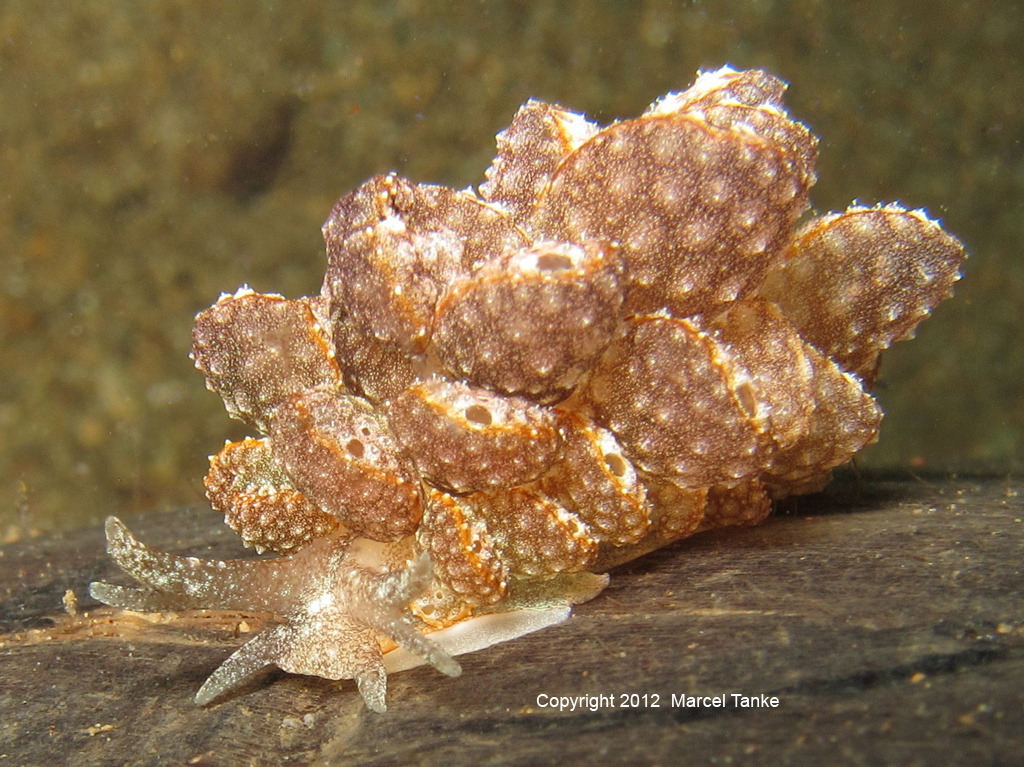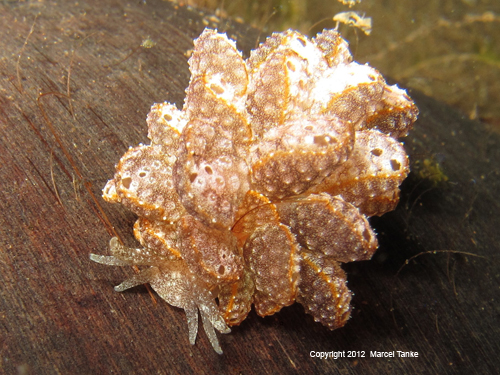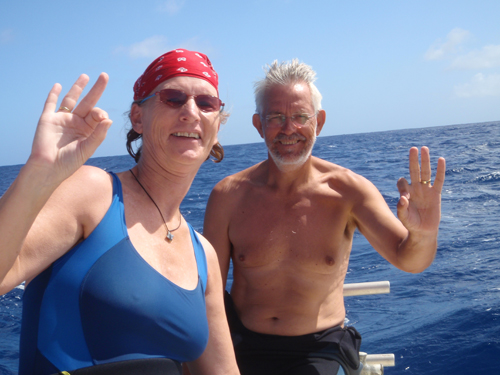 |
Cyerce pavonina
Images courtesy of Marcel TankeAnilao, Batangas, Philippines
Cyerce pavonina Bergh, 1888

While most Cyerce's have a semi-transparent body and smooth cerata, C. pavonina is opaque and covered with papillae. Its color is quite variable from white to cream and pale brown. This would indicate that Marcel's specimen is on the dark side. It is interesting that this species has pseudo pores at the all over the cerata. This makes me wonder if this isn't for protective resemblance making the slug appear like a tunicate colony. A little farther north in the eastern Pacific we find a very similar species Cyerce orteai . Like C. pavonina, its body is opaque and the cerata are covered with tubercles. Angel Valdes and Yolanda Camacho-Garcia described C. orteai in 2000, from Costa Rica. The two species are extremely similar. Although they compared C. orteai to a pile of known Cyerce species, C. pavonina was not one of them. In their original description of C. orteai Valdes and Camacho mention specimens from Hawaii, and Indo-Pacific Nudibranchs and Eastern Pacific Nudibranchs both have their geographic ranges overlapping in Hawaii and Japan. This makes matters very suspect - We need to take a closer look. Angel himself agrees. This is one of the many species of sea slug that is capable of autotomizing (drop of) their cerata as a defensive strategy against antagonists. |
C. pavonina was originally described from the Philippines, and is also reported from the western Indian Ocean of South Africa and Tanzania to Australia, Japan and Hawaii.
References:
Valdes, A. & Camacho-García, 2000. A new species of Cyerce Bergh, 1871 (Mollusca, Sacoglossa, Polybranchiidae)
from the Pacific Coast of Costa Rica. Bulletin of Marine Science, 66 (2):445-456
Sammamish, WA 98074
Nov., 2012
Send Dave email at davidwbehrens@gmail.com
Marcel and wife Marion

Marcel and Marion presently again live in their native country, the Netherlands. They started diving during the 14 years that they lived in China and Korea. Marcel has BSAC Instructor diving level. Diving took them pretty much all over Asia and many other places. Nudibranchs became their main interest after several trips to the Philippines and Indonesia. Marion is "spotter" for the nudibranchs and Marcel is taking the pictures. Marcel is still using a "point and click" digital camera, (see http://slugsite.us/bow2007/nudwk586.htm ) , but upgraded to a Canon S95. This was our 7th trip to the Anilao area of the Phillipines. In 8 dive days, 32 dives, Marion and I saw and have pictures of 170 (one hundred and seventy) different sea slugs, of which 140 different true nudibranchs! Indeed, Anilao is the nudibranchs capital of the world! Send Marcel email at marceltanke@cs.com
|

|
